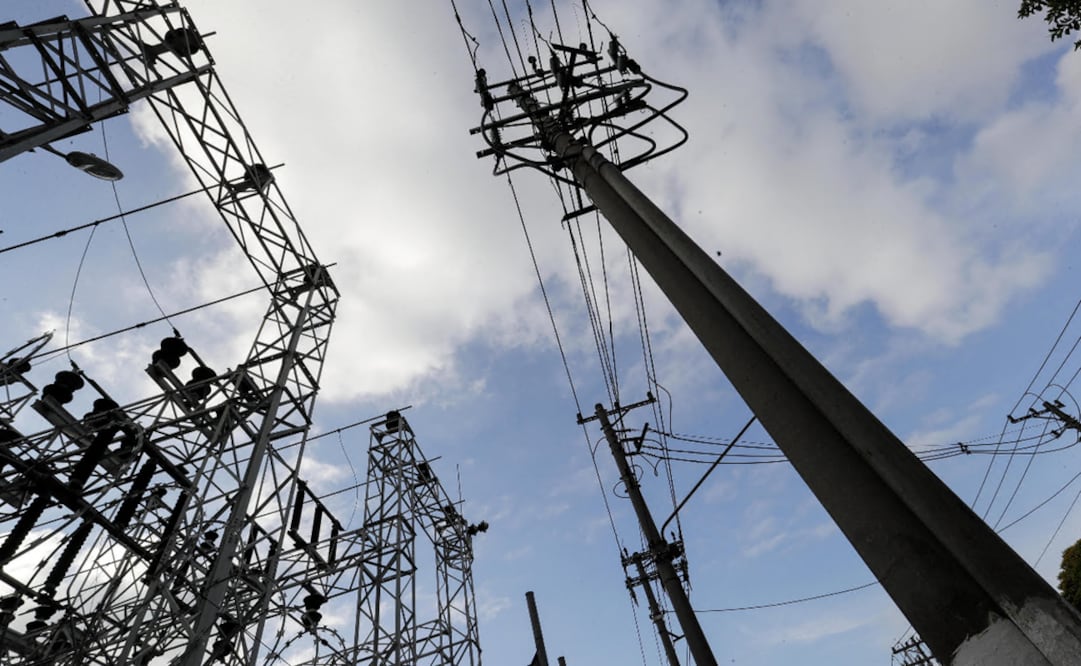Más Información

FGR investiga caja negra del Tren Interoceánico y concluye necropsias; despliega peritos en 13 especialidades

A 50 días del Plan Michoacán, detienen a 278 personas; realizan recorridos a empacadoras e industrias cítricas

Prueba piloto para afiliar a trabajadores de plataformas digitales aún no termina, explica IMSS; acciones continúan, dice

Detienen y vinculan a proceso Alejandro Baruc “N” en Uruapan, Michoacán; podría estar relacionado con el asesinato de Carlos Manzo

Emiten alerta en seis estados por robo de cilindro con gas cloro; advierten por alto nivel de toxicidad
Half of Mexico’s electricity is powered by private companies. Through a series of schemes, large and small private companies, as well as generation and consumption companies, generate 45.8% of the electricity available in the country.
These companies expanded once the country changed its laws and opened the sector up to private investment, taking many clients from the Federal Electricity Commission ( CFE ), a state-owned company, by arguing that its prices were too high.
In 2000, when the Federal Electricity Commission was led Alfredo Elías Ayub, it issued a document that reported the state-owned company provided personal attention to 10,500 large companies such Compañía Minera Autlán, Mexicana de Cobre, Altos Hornos de México, Cementos Apasco, Bimbo, and Peñoles.
The latest report available dates back to 2018 and it includes 1,041 large companies.
To explain the decrease in profits for the state-owned company during some intermediate periods, an argument that was often used was “the increase (…) in self-supply ,” especially since large companies turned to these practices.
Recommended: Half a million Mexicans have no electricity amid the COVID-19 pandemic
The first company to be granted a self-supply permit
Clients started to turn to self-supply since 1994 when Mexican authorities granted mining company Miners Hecla a permit to self-supply electricity. The permit was granted by Georgina Kessel, the then-president of the Energy Regulating Commission (CRE), and who would later become the Energy Minister during Felipe Calderón’s administration.
By May 2006, Termoeléctrica del Golfo was granted an electricity self-supply permit. The company would keep a percentage of the electricity generated but the majority of it would be used by Cementos Mexicanos (Cemex), which would receive the service through the CFE’s network. This was one of the first major clients lost by the state-owned company.
In time, several other companies created self-supply companies with consortiums like Telmex, Bimbo, Cemex, Soriana, Chedraui, Cervecería Cuauhtémoc, Celanese, Oxxo, CitiBanamex, Banco Azteca, TV Azteca, Hyundai, KIA, Ford, Nissan Mexicana, Tren Suburbano, Grupo Elektra, BBVA, PepsiCo, Costco, Sonoco, Comercial Mexicana, and Walmart, among others. A few weeks ago, the Federal Electricity Commission described this practice as a “black electricity market.”
Now, several others companies have turned to this practice: Ternium, Cementos Apasco, Minera Autlán, Kimberly Clark, Mexichem (Orbia), BASF, Conductores Monterrey, Vidriera Monterrey, Alestra, Fábricas Monterrey, Bayer de México, Deacero, Tec de Monterrey, Tubacero, Banca Afirme, Vitro, Continental, Corning, Sanborns, Evenflo, Gamesa, LG, Mabe, Maizoro, Sabritas, Salinas Industrial, Polioles, and Sigma Alimentos.
Furthermore, documents from the Federal Electricity Commission (CFE) show that many of these companies are partners in more than one permittee. This is the case of Iberdrola, a company that concentrated several large companies in different permits signed with self-supply power stations.
The Spanish company arrived in the Mexican government during Felipe Calderón’s government. The administration allowed Iberdrola to gather up to 586 partners in three permits and some of them were mentioned in the three permits: Cementos Apasco, Kimberly Clark, Nissan Mexicana, Cervecería Cuauhtémoc, and Mexichem.
Current outlook
According to the 2020-2024 Energy Sector Plan (Plan Sectorial de Energía 2020-2024), the participation of private companies on the National Electricity System (SEN) includes 255 self-supply companies, small production companies, and export and import companies that generated 45.8 terawatt-hours (TWh), which represents 14% of the national consumption; however, Iberdrola dominated the market.
Regarding the operation schemes, the so-called independent electricity producers (PEE) are the ones that prevail the most. These schemes emerged in 1995 and are known as long-term productive infrastructure projects.
Through this financing model, international companies, mostly from Spain, arrived in Mexico. These foreign companies built power plants to sell electricity to the Federal Electricity Commission, facilitating land, the construction of power plants, as well as its interconnection.
In this case, the CFE is forced to purchase, supply, and transport gas from 13 power stations owned by external energy producers , adopting all the operational risks. These companies and power plans signed a contract with the Federal Electricity Commission until 2039.
The contractual commitments signed between the CFE and these companies establish the purchase of electricity for over MXN 2 billion; so far, the Mexican government has paid MXN 886,778 million. For the next 19 years, Mexico will pay over MXN 1 billion.
For example, Iberdrola operates eight combined cycle power stations. The CFE signed a contract for over MXN 1 billion, which amounts to 46% of the total committed by the state-owned company in 33 power stations. After 2023, the Federal Electricity Commission would still own MXN 902,000,437 to the Spanish company.
Therefore, in its 2020-2024 Energy Sector Plan, the federal government considers it will be tied to private suppliers for the next 19 years and that in case those agreements aren’t modified, Mexico will lose up to MXN 160,000 million.
gm
Noticias según tus intereses
[Publicidad]
[Publicidad]









